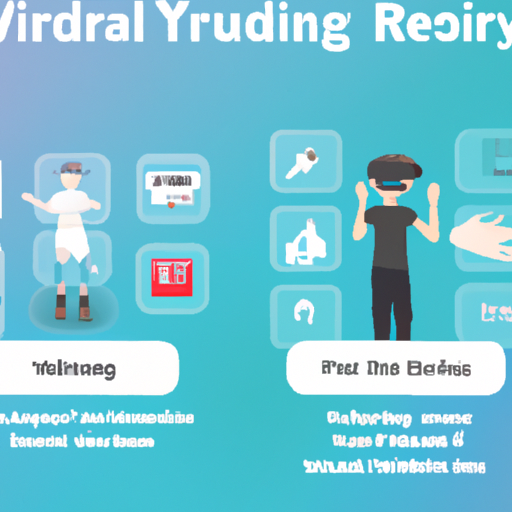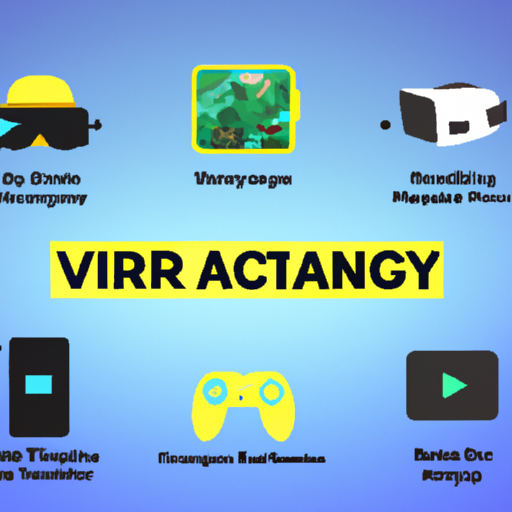-
Table of Contents
“Unlock the Future: Harnessing the Power of VR and AR to Transform Society and the Economy.”
Introduction
The future of virtual reality (VR) and augmented reality (AR) technology is an exciting prospect for many industries and individuals. With the potential to revolutionize the way we interact with the world, VR and AR technology has the potential to have a profound impact on society and the economy. From entertainment to education, healthcare to manufacturing, the possibilities are endless. This article will explore the potential of VR and AR technology, its potential impact on society and the economy, and the challenges that must be overcome in order for it to reach its full potential.
The Role of VR and AR in the Future of Workplace Training and Collaboration
Virtual reality (VR) and augmented reality (AR) are emerging technologies that are revolutionizing the way we work and collaborate. As these technologies become more accessible and affordable, they are increasingly being used in workplace training and collaboration.
VR and AR offer a unique way to engage employees in training and collaboration. By immersing employees in a virtual environment, they can gain a better understanding of the material and be more engaged in the learning process. VR and AR can also be used to simulate real-world scenarios, allowing employees to practice and hone their skills in a safe and controlled environment.
In addition to providing a more engaging learning experience, VR and AR can also be used to facilitate collaboration between employees. By creating a shared virtual space, employees can work together on projects, share ideas, and collaborate in real-time. This can help to foster a sense of teamwork and collaboration, as well as improve communication and productivity.
Finally, VR and AR can be used to create a more immersive and engaging workplace. By creating a virtual environment, employers can create a more engaging and stimulating work environment, which can help to improve morale and productivity.
Overall, VR and AR are powerful tools that can be used to revolutionize workplace training and collaboration. By providing a more engaging learning experience, facilitating collaboration, and creating a more immersive work environment, these technologies can help to improve employee engagement, morale, and productivity.
The Impact of VR and AR on the Entertainment Industry
The entertainment industry has been revolutionized by the introduction of virtual reality (VR) and augmented reality (AR). These technologies have enabled the industry to create immersive experiences that were previously impossible. VR and AR have been used to create interactive games, movies, and other forms of entertainment.
VR is a computer-generated simulation of a three-dimensional environment that can be interacted with in a seemingly real or physical way. It is typically experienced through a headset that is worn over the eyes and ears. AR, on the other hand, is a technology that overlays digital content onto the real world. It is typically experienced through a smartphone or tablet.
The impact of VR and AR on the entertainment industry has been profound. VR and AR have enabled the industry to create immersive experiences that were previously impossible. For example, VR has been used to create interactive games that allow players to explore virtual worlds. It has also been used to create movies that allow viewers to experience the story from the perspective of the characters. AR has been used to create interactive experiences that allow users to interact with digital content in the real world.
The impact of VR and AR on the entertainment industry is expected to continue to grow in the coming years. As the technology becomes more advanced, it will enable the industry to create even more immersive experiences. Additionally, the cost of VR and AR technology is expected to decrease, making it more accessible to a wider range of consumers.
In conclusion, VR and AR have had a profound impact on the entertainment industry. These technologies have enabled the industry to create immersive experiences that were previously impossible. As the technology continues to advance, the impact of VR and AR on the entertainment industry is expected to grow.
Exploring the Potential of VR and AR in Healthcare
Virtual reality (VR) and augmented reality (AR) are two of the most exciting and rapidly developing technologies of the 21st century. In recent years, these technologies have been increasingly explored for their potential applications in the healthcare sector.
VR is a computer-generated simulation of a three-dimensional environment that can be interacted with in a seemingly real or physical way. It is typically experienced through a headset, which immerses the user in a virtual world. AR, on the other hand, is a technology that overlays digital information onto the physical world. It is typically experienced through a smartphone or tablet, which allows the user to view the physical world with digital information superimposed on it.
The potential applications of VR and AR in healthcare are vast and varied. For example, VR can be used to provide immersive training experiences for medical professionals, allowing them to practice complex procedures in a safe and controlled environment. AR can be used to provide real-time information to medical professionals during procedures, such as patient vitals or medical images.
VR and AR can also be used to improve patient care. For example, VR can be used to provide immersive distraction therapy for patients undergoing painful or uncomfortable treatments. AR can be used to provide patients with real-time information about their condition, such as visualizations of their medical data or instructions on how to take their medication.
Finally, VR and AR can be used to improve the efficiency of healthcare systems. For example, VR can be used to provide remote consultations with medical professionals, allowing patients to receive care without having to travel to a hospital or clinic. AR can be used to provide real-time information to medical staff, such as patient records or medical images.
In conclusion, VR and AR have the potential to revolutionize the healthcare sector. By providing immersive training experiences, improving patient care, and increasing the efficiency of healthcare systems, these technologies have the potential to improve the quality of healthcare for everyone.
How VR and AR Technology Could Revolutionize Education
Virtual reality (VR) and augmented reality (AR) technology have the potential to revolutionize the way we learn. By immersing students in a virtual environment, they can gain a deeper understanding of the material they are studying. Similarly, AR technology can be used to overlay digital information onto the physical world, allowing students to interact with their environment in a more meaningful way.
VR technology can be used to create immersive learning experiences. For example, students can explore a virtual museum or take a virtual field trip to a historical site. This allows them to gain a deeper understanding of the material they are studying, as they are able to interact with the environment in a more meaningful way. Additionally, VR technology can be used to create simulations of real-world scenarios, such as a medical procedure or a natural disaster. This allows students to gain a better understanding of the material they are studying, as they are able to experience it in a more realistic way.
AR technology can also be used to enhance the learning experience. For example, AR can be used to overlay digital information onto the physical world. This allows students to interact with their environment in a more meaningful way. For example, a student studying a historical site can use AR to view a 3D model of the site, as well as additional information about the site. This allows them to gain a deeper understanding of the material they are studying.
In conclusion, VR and AR technology have the potential to revolutionize the way we learn. By immersing students in a virtual environment, they can gain a deeper understanding of the material they are studying. Similarly, AR technology can be used to overlay digital information onto the physical world, allowing students to interact with their environment in a more meaningful way.
Conclusion
The future of VR and AR technology is incredibly exciting and has the potential to revolutionize the way we interact with the world. It has the potential to create new industries, create jobs, and improve the quality of life for people around the world. As the technology continues to develop, it will become more accessible and affordable, allowing more people to experience the benefits of this technology. With the right investments and support, VR and AR technology could have a profound impact on society and the economy.




